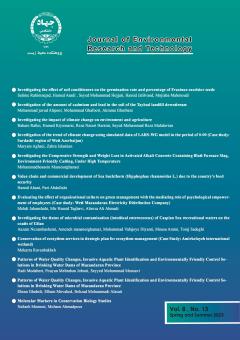-
-
-
Open Access Article
1 - Studying the Spatial Distribution Pattern using Distance and Quadratic Methods in the Zagros Recreational Areas
koroush nazarpoorfard Hassan pourbabaeiStudying the spatial pattern in plant communities is necessary for understanding the many issues in forest ecology and management. The purpose of this study is investigating the effect of recreation on Spatial patterns of trees in Zagros oak forests. Sampling methods we MoreStudying the spatial pattern in plant communities is necessary for understanding the many issues in forest ecology and management. The purpose of this study is investigating the effect of recreation on Spatial patterns of trees in Zagros oak forests. Sampling methods were fixed-area plots and T-square methods. In each region, there are 40 sample plots and 40 sampling points were taken to measure the distances in the distance method in each region. To quantify and analyze the distribution patterns in the sample method, Green, Morissita and Standardized Morisita indicators were used and The Hopkins, Eberhardt, Heinz, C, Johnson and Zimmer indicators were used in the distance methods. C, Hopkins and Heinz indicators showed a clumped pattern in the area. But the Johnson Zaimer and Eberhart indicators showed a regular pattern in the control area. The results showed that among the Sample plot indicators the Morissita and Morissita standardized indicators expressed a clumped pattern in the recreational and the control area, and the Green indicator showed a regular pattern in the recreational area and the control area. The values obtained from the distance indicators showed that the degradation in the recreational area caused a change in the spatial pattern and the spatial pattern in the recreational area was changing so that most indicators in this area showed a regular pattern. Among the distance indicators used, C and Hines indicators and among the sample method, the Green indicator showed these differences well and the species of the two regions were identified suitable to describe the spatial pattern. Manuscript profile
List of Articles koroush nazarpoorfard
-
The rights to this website are owned by the Raimag Press Management System.
Copyright © 2017-2024


